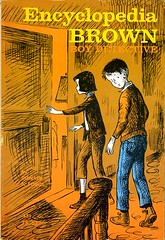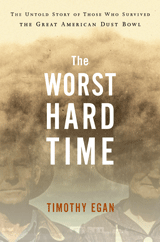Pop-up books.
This past week PopMatters has been giving Continuum's 33.3 series a thorough going over; I glommed right onto editor Rob Horning's dissenting voice, as he scratches in overly erudite fashion the uncomfortable itch that this series has long provoked in me. (Despite not having read a one; an earlier crab-out of mine almost led to a freebie, but it never came to pass.)
I don’t agree with everything Horning says, and I should add that on some level I really do appreciate the series—it’s hard not to make a mental list of albums worth the treatment, for example, and the serialist in me loves the hardcore design repetition—but when I read: “Devoting a monograph to an album … recasts the record as a curated objet d'art worthy of intensive analysis,” I nodded. (Note to Horning: you might rethink citing Derrida, in French, while critiquing the drive toward ivory towery musical writing. I’m just sayin’.) What is happening in this series is different than what happens in the Greil Marcus-edited Stranded, for example, with chapters from different critics devoted to desert-island discs, or the Phil Freeman-edited update of same that’s to come. A matter of scale, I guess, and degree of fetishization. In the case of Stranded, I’m not left wondering about what was left out; in a series pushing thirty volumes, there’s a tendency to ask why one’s faves are not part of this particular museum.
But the idiosyncratic selections are not my main beef at all, and I’m trying hard to figure out what it is about this series that grates enough to make me dislike it from a distance. I think the problem I have has something to do with that curatorial impulse, how the albums, simply by virtue of being collected and described between hard covers in a formalized series, are invested with a totemic importance that … what? obscures or alters their true meaning / genius / resonances? Nah. As Carl Wilson noted in his blog yesterday, if that happens, “either you’ve got a pretty weak album or a supernally powerful critic.” (A third option is: you’ve got a weak-willed reader who prefers received wisdom and mediated art to first-hand experiences.) Although speaking of totems, the process of turning these albums into books does mirror my own mildly discomfiting experience of turning what started as fan-based record buying into “collecting,” a trend I accept if not embrace.
On the curating tip: I think my distaste is at least partly based on my experience in the book trade, as an occasional curator/editor of series. Wherein the Iron law of oligarchy was typically activated, and, whatever the original impulse behind a given series, the point becomes the preservation and continuation of the series uber alles. I have no quibble with the authors, or the editor, and can’t even comment on individual volumes. (Even if the editor did kindly reject a book proposal of ours in recent months.) This is a meta-critique, stemming from one reader’s skeptical take on book series in general. And one who’s having trouble living with his inner curator. For what it’s worth, I also have problems with this series, to name another. I have zero problem whatsoever with this series, however.
I don’t agree with everything Horning says, and I should add that on some level I really do appreciate the series—it’s hard not to make a mental list of albums worth the treatment, for example, and the serialist in me loves the hardcore design repetition—but when I read: “Devoting a monograph to an album … recasts the record as a curated objet d'art worthy of intensive analysis,” I nodded. (Note to Horning: you might rethink citing Derrida, in French, while critiquing the drive toward ivory towery musical writing. I’m just sayin’.) What is happening in this series is different than what happens in the Greil Marcus-edited Stranded, for example, with chapters from different critics devoted to desert-island discs, or the Phil Freeman-edited update of same that’s to come. A matter of scale, I guess, and degree of fetishization. In the case of Stranded, I’m not left wondering about what was left out; in a series pushing thirty volumes, there’s a tendency to ask why one’s faves are not part of this particular museum.
But the idiosyncratic selections are not my main beef at all, and I’m trying hard to figure out what it is about this series that grates enough to make me dislike it from a distance. I think the problem I have has something to do with that curatorial impulse, how the albums, simply by virtue of being collected and described between hard covers in a formalized series, are invested with a totemic importance that … what? obscures or alters their true meaning / genius / resonances? Nah. As Carl Wilson noted in his blog yesterday, if that happens, “either you’ve got a pretty weak album or a supernally powerful critic.” (A third option is: you’ve got a weak-willed reader who prefers received wisdom and mediated art to first-hand experiences.) Although speaking of totems, the process of turning these albums into books does mirror my own mildly discomfiting experience of turning what started as fan-based record buying into “collecting,” a trend I accept if not embrace.
On the curating tip: I think my distaste is at least partly based on my experience in the book trade, as an occasional curator/editor of series. Wherein the Iron law of oligarchy was typically activated, and, whatever the original impulse behind a given series, the point becomes the preservation and continuation of the series uber alles. I have no quibble with the authors, or the editor, and can’t even comment on individual volumes. (Even if the editor did kindly reject a book proposal of ours in recent months.) This is a meta-critique, stemming from one reader’s skeptical take on book series in general. And one who’s having trouble living with his inner curator. For what it’s worth, I also have problems with this series, to name another. I have zero problem whatsoever with this series, however.






1 Comments:
Seems to me that the problem with the series is that often there's not particularly interesting backstories to many of the albums. And the surrounding social context of the albums tends to be pretty thin if you have any familiarity with recent history. Some of the writers get around this by waxing about their own very personal attachments and experiences with the album in question. That's great if the writer in question happens to be an amazing prose stylist and quasi-genius. Someone like, say, Geoff Dyer. Or Luc Sante. Or Greg Tate. Or John Darnielle. One of those authors who would be interesting to read no matter what album they chose. Although tellingly none of the above have been hired for these books.
The series is wonderfully designed and nicely sized to feel like an appetizingly lite reading snack. So I can see the appeal there. And if you're a crazy fan of, say, "Exile on Main Street", and wanted to hear about how the Stones recorded in the basement of a castle while smack-addled bikers mauraded upstairs and groupies practiced seances to summon Brian Jones, then I can see the appeal there, too.
But in general, with so many life-changingly great tomes out there to read, why waste time with a fistful of these books? Aren't the albums themselves enough? Wouldn't you rather be reading something like PLAY IT AS IT LAYS by Joan Didion, AIR GUITAR by Dave Hickey, or LOCAS by Jaime Hernandez? I mean, life is shorter than you think!
And speaking as someone who spent almost a decade in publishing - including time with a series of books published by Schirmer which were very similar to the 33 1/3 series, just not as hiply packaged - there is much truth to the Prof's assertion that the series is driven more by marketing than by a writer's burning need to tell the amazingly strange and compelling story behind the recording of, say, The Cramps "Songs the Lord Taught Us." The series concept is the most important thing, album chosen in the second most important thing, the design is the third most important item, and the writer is the very last consideration. That's the publishing biz for you. But why readers would rush to embrace this formula is beyond me.
Post a Comment
<< Home